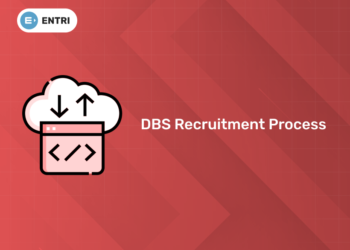Table of Contents
Kerala Public Service Commission gives an opportunity for young engineers to work in the government sector of India. KPSC has opened the post of Assistant Engineer (AE) in various departments of Kerala. Civil is one such category that falls in the KSEB department. Kerala PSC recruits candidates to the post of Assistant Engineer. The last date for apply online was for the Kerala PSC Assistant Engineer Civil examination was April 21, 2021. KPSC AE recruits candidates through direct appointment as well as through department quota. In this article let us check Kerala PSC Assistant Engineer Civil Exam Pattern and Syllabus 2022.
Subscribe to Entri to ace your preparations
Kerala PSC Assistant Engineer Civil 2022- Important Details
| Parameters | Description |
| Name of the organization | Kerala Public Service Commission |
| Name of the post | Assistant Engineer Civil |
| Name of the department | Kerala State Electricity Board Ltd |
| Payscale | Rs.40975-81630/- |
| Number of vacancies | 37 |
| Method of appointment | Direct recruitment
Direct recruitment from departmental candidates of irrigation department only |
| Category number | 05/2021 |
| Age limit | 18-36 years |
| Educational qualification | Degree in civil engineering from any universities of Kerala
or Associate membership of Institute of engineers in India In Civil engineering or Pass in Section A & B of the Associate Membership Examination of the Institute of Engineers India in Civil Engineering. |
| Mode of application | Online |
| Last date of submitting the application | 21 April 2021 |
| Examination date | To be announced |
| Admit card download | To be announced |
| Official Website | keralapsc.gov.in |
KERALA PSC ASSISTANT ENGINEER CIVIL NOTIFICATION 2022
1: Between the period of 1858-1947, how many Viceroys ruled over India?
Prepare for Kerala PSC Technical Exams with Entri
സർക്കാർ ജോലി എന്ന സ്വപ്നം ഇനി സ്വപ്നം മാത്രമല്ല! Join Kerala's Top-rated PSC Coaching Programs
Kerala PSC Assistant Engineer Civil Exam Pattern 2022
The exam pattern of KPSC AE Civil is tabulated below. It is very important to keep yourself acquainted with the exam pattern for better preparation for the examination. The selection process for an Assistant engineer includes the written examination through offline mode.
| Parameters | Details |
| Type of the examination | Objective Type Multiple Choice |
| Exam Mode | Offline |
| Total Marks | 100 marks |
| Duration | One hour fifteen minutes |
| Medium | English |
Kerala PSC Assistant Engineer Civil Exam Syllabus 2022
Aspirants have to be well updated with the syllabus of the examination, only then appropriate study plan can be prepared in order to ace their score in the examination.
Following are the 8 main parts included in the Kerala PSC Assistant Engineer Civil exam syllabus
- Mechanics of Solids and Structural Analysis
- Fluid Mechanics and Water Resources Engineering
- Surveying and Levelling, Quantity Surveying and Valuation
- Building materials, Construction Technology, Construction Management
- Environmental Engineering
- Design of Structures
- Geotechnical Engineering
- Transportation Engineering and Urban Planning
Described below are the topics included in each of the 8 parts included in the syllabus of the KPSC AE exam
|
Mechanics of Solids and Structural Analysis |
|
Concept of stress and strain Bending moment and shear force Stresses in beams Deflection of beams Theory of columns, Truss analysis Displacement response of statically determinate structural systems using energy methods Principle of virtual work, Statically indeterminate structures Strain Energy methods, Moving loads and influence lines, Arches Slope Deflection Method, Moment Distribution Method Clapeyrons Theorem (Three Moment Equation) Kani’s method of analysis |
|
Fluid Mechanics and Water Resources Engineering |
|
Fluid Statics- Fluid pressure, Buoyancy and floatation, Fluid Kinematics Dynamics of fluid flow, Flow through orifice and notches, Flow through pipes Boundary layer, Drag and Lift on immersed bodies Hydraulic machines- flow through vanes (moving and stationary) Impulse and reaction Turbines, Centrifugal Pumps, Open channel flow, Uniform flow Hydraulic Jump, Gradually varied flow, Dimensional analysis and model testing Hydrologic cycle, Precipitation, Infiltration and Evaporation-measurement and data analysis Runoff-components and computation, Hydrograph, Unit Hydrograph and S-Hydrograph Irrigation types and methods-Soil water plant relationships Frequency of irrigation, Computation of crop water requirement Stream flow measurement -Stage-discharge curve Meandering of rivers, river training works Surface water systems: diversion and storage systems, reservoir Estimation of storage capacity and yield of reservoirs Reservoir sedimentation -useful life of reservoir Groundwater – Aquifer types and properties Steady radial flow into a well Estimation of yield of an open well |
|
Surveying and Levelling ,Quantity Surveying and Valuation |
|
Basics of Surveying, Levelling and Contouring, Area and Volume Computation Theodolite Survey, Mass Diagram, Triangulation, Theory of Errors Electronic Distance Measurement, Total Station Survey Global Positioning Systems, Remote Sensing, Geographical Information System Analysis of rates – Data book and schedule of rates Analysis of rates for various items of work, Detailed specification Types of Estimate Detailed estimate including quantities, abstract and preparation of various items of works Preparation of bar bending schedules for various RCC works Valuation- Methods of valuation, Depreciation, Fixation of rent |
|
Building materials, Construction Technology, Construction Management |
|
Construction Materials – Timber, Mortar, Iron and Steel, Structural steel, Modern materials Concrete–Admixtures, Making of concrete, Properties of concrete, Mix proportioning Building construction- Foundations, Cost-effective construction, Masonry, Lintels and arches Floors and flooring, Roofs and roof coverings, Doors, windows and ventilators, Finishing works Tall Buildings – Steel and Concrete frame, Prefabricated construction, Slip form construction Vertical transportation – Stairs, Elevators, Escalators and Ramps Building failures and Retrofitting, failures in RCC and Steel structures Construction Planning and Scheduling, Construction disputes and settlement Ethics in Construction, Construction safety Principles of materials management Quality management practices, Construction procedures |
|
Environmental Engineering |
|
Water sources and demand, Quantity estimation Population forecasting, Quality of water Water treatment- Physical methods, Chemical methods Design of sedimentation tank, flocculator, clariflocculator, filters, Membrane treatment techniques Disinfection methods Distribution of water, Pumps, Hardy Cross method of analysis Waste water- Sources, Characteristics, Oxygen demand Design of sewers, Circular sewers, Partial flow and full flow conditions Sewer appurtenances, Disposal of wastewater, Streeter Phelps equation Oxygen sag curve, Treatment methods, Aerobic and anaerobic methods Design of various treatment units-Screening, Grit chamber, Sedimentation tank Activated Sludge process, Trickling filter, Rotating biological contactor Septic tanks, Imhoff tanks, Oxidation ditches, Oxidation ponds Upflow anaerobic sludge blanket reactors Sludge digestion, Sludge drying bed Air pollution-sources, effects on human Control of air pollutants Air quality legislations |
|
Design of Structures |
|
Limit state method of design Analysis of reinforced rectangular beams Shear strength of RC beam Design of shear reinforcement, Bond and development length Curtailment of reinforcement Design for torsion, Design of one way slab, Cantilever slab, Continuous slab (detailing only) Two way slabs, Limit state of serviceability, Deflection, Cracking Stair cases -design & detailing, Columns-effective length Design of axially loaded short columns with rectangular ties & helical reinforcement Columns subjected to compression, Uniaxial bending and biaxial bending Design of slender columns, Design of wall/strip footing- design of footings Design of cantilever retaining wall without surcharge Design principles of counter fort retaining wall Circular slabs simply supported, fixed and partially fixed subjected to udl Design of water tanks, Design philosophy and requirements, joints IS code recommendations, Pre-stressed concrete Concept of prestressing, materials and methods of prestressing Prestressing systems, losses of prestress Analysis of prestressed beams (rectangular and I-sections) at stages of transfer and service Steel and steel structures – Bolted and welded connections Tension & Compression members, Beams, Roof trusses, Purlins Timber structures- columns, composite beams (concepts only) |
|
Geotechnical Engineering |
|
Major soil deposits of India Classification and three phase system of soil Permeability of soils, Principle of effective stress Shear characteristics of soil Consolidation (Terzaghi’s theory of one-dimensional consolidation only) & Compaction Stability of finite slopes-Swedish Circle Method and Friction circle method Stresses in subsoil due to loaded areas of various shapes Boussinesq’s formula, Newmark’s chart Lateral earth pressure Rankine’s and Coulomb’ theories Bearing capacity of soil, Estimation of magnitude of settlement Site investigation, Standard Penetration Test and Plate load test Design of shallow, deep and machine foundations Ground improvement techniques |
|
Transportation Engineering and Urban Planning |
|
Classification and alignment of highways Geometric design of highways Properties and testing of pavement materials CBR method of flexible pavement design Construction and maintenance of pavements Design of runways, taxiways and aprons Traffic characteristics, Traffic studies and analysis, Traffic control devices Airport characteristics- Aircraft component parts Site selection, Terminal area planning- Airport marking and lighting Traffic regulation rules, Highway capacity, Traffic safety Influencing factors and preventive measures for traffic accidents Basic diagrams of traffic flow theory. Railways- geometric Design of tracks, railway operation control, Maintenance Alignment, Ventilation and drainage of tunnels, Types of harbours and docks Goals and objectives of planning Components of planning, Regional planning Theories of urbanization Study of Urban Forms, Zoning Development of new towns, Town Development Plan, Town planning acts |
Check for the appropriate study materials to cover all the topics mentioned above and start preparing well in advance to achieve success.
Click here for Kerala PSC Assistant Engineer Answer key
How Entri will help you with the study preparation for Kerala PSC Assistant Engineer Civil examinations 2022
Entri provides you an online platform to prepare for the exam
- You can download the app free of cost and join the class
- Entri provides video classes as well on various important topics by the excellent faculties from the PSC Coaching field.
- Entri provides revision modules, monthly tests based on the classes
- Entri provides an excellent platform with full- length mock tests including previous year question papers
- It also gives you access to clarify your doubts
Subscribe to Entri to help you get along with the journey of preparation for the examination.
| Kerala PSC AE Civil Exam Information Links | |
| Kerala PSC AE Civil Notification | Kerala PSC AE Civil Mock Test |
| Kerala PSC AE Civil Exam Date | Kerala PSC AE Civil Video Course |
| Kerala PSC AE Civil Application Form | Kerala PSC AE Civil Study Materials |
| Kerala PSC AE Civil Vacancy | Kerala PSC AE Civil Interview Questions |
| Kerala PSC AE Civil Admit Card | Kerala PSC AE Civil Job Profile |
| Kerala PSC AE Civil Study Plan | Kerala PSC AE Civil Salary |
| Kerala PSC AE Civil Previous Question Papers | Kerala PSC AE Civil Preparation Tips and Tricks |
| Kerala PSC AE Civil Best Books | Kerala PSC AE Civil Result |
| Kerala PSC AE Civil Eligibility Criteria | Kerala PSC AE Civil Cutoff |
| Kerala PSC AE Civil Selection Process | Kerala PSC AE Civil Exam Analysis |
| Kerala PSC AE Civil Answer Key | |













